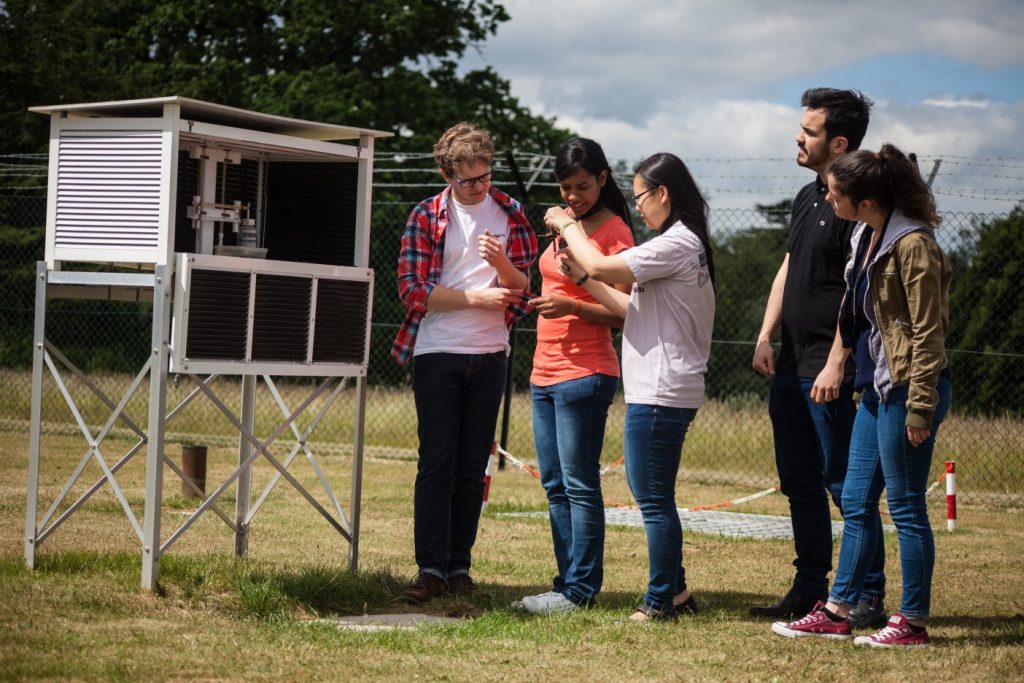Air temperature and humidity
Air temperature and humidity measurements
Climatological measurements of air temperature are currently made using standard, calibrated sheathed thermometers (dry bulb, wet bulb, maximum and minimum) exposed in a Metspec ‘large’ (double width) Stevenson screen, usually referred to as the ‘climatological’ screen, located towards the western end of the observatory plot. The thermometers are read once daily at 0900 UTC, when the maximum and minimum thermometers are reset. The relative humidity (RH) at 0900 UTC is calculated from the observed dry and wet bulb readings.

The ‘climatological’ screen in the Observatory, containing the dry and wet bulb and maximum and minimum thermometers, photographed June 2015. Photograph Copyright © Stephen Burt.
Automatic observations of air temperature are made using a pair of 100 Ω platinum resistance thermometers (PRTs), manufactured by Campbell Scientific, as a dry bulb and wet bulb combination. These are exposed in a Metspec ‘large’ (double width) Stevenson screen located towards the centre of the observatory plot. Both PRTs are polled once per second using a Campbell Scientific CR9000X logger: standard ‘meteorological’ output consists of 1 minute averages of the polled PRT values in compliance with World Meteorological Organization specifications. Maximum and minimum temperatures for any specified period (usually daily, either 0000 to 0000 UTC and/or the ‘climatological day’ 0900 to 0900 UTC) are the highest and lowest, respectively, of these 1 minute averages during the relevant period. Relative humidity (RH) and dew point are calculated every 60 seconds from the 1 min averaged values of the dry and wet bulb; a calculated or derived wet bulb temp is also obtained from the direct measurements of RH and air temperature.
Also in the Stevenson screen alongside the dry and wet bulb PRTs is a Rotronic HC2-S3 relative humidity sensor. This is a capacitance sensor, providing a direct output of the relative humidity. This sensor is polled once per second by the Campbell Scientific CR9000X logger: standard ‘meteorological’ output consists of 1 minute averages of the polled values in compliance with World Meteorological Organization specifications. The ‘derived wet bulb’ and dew point values are also calculated once per minute using the relative humidity measurement from the Rotronic sensor.
Period of record available
Temperature and humidity records (maximum, minimum, 0900 UTC dry and wet-bulb with derived dew point, RH and vapour pressure) for the university are available from January 1908 (see University of Reading climatological data)
Sensor manufacturer links
Campbell Scientific 100 Ω platinum resistance thermometers (PRTs)
Rotronic Relative Humidity sensor
This page updated February 2018